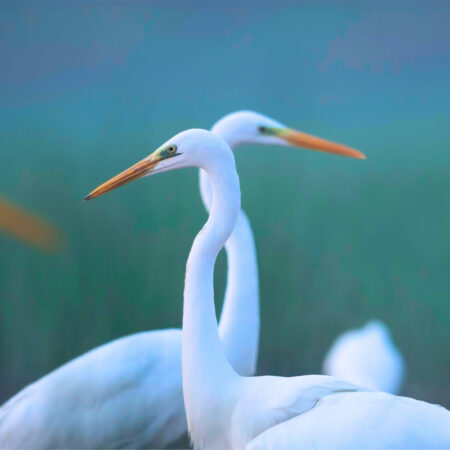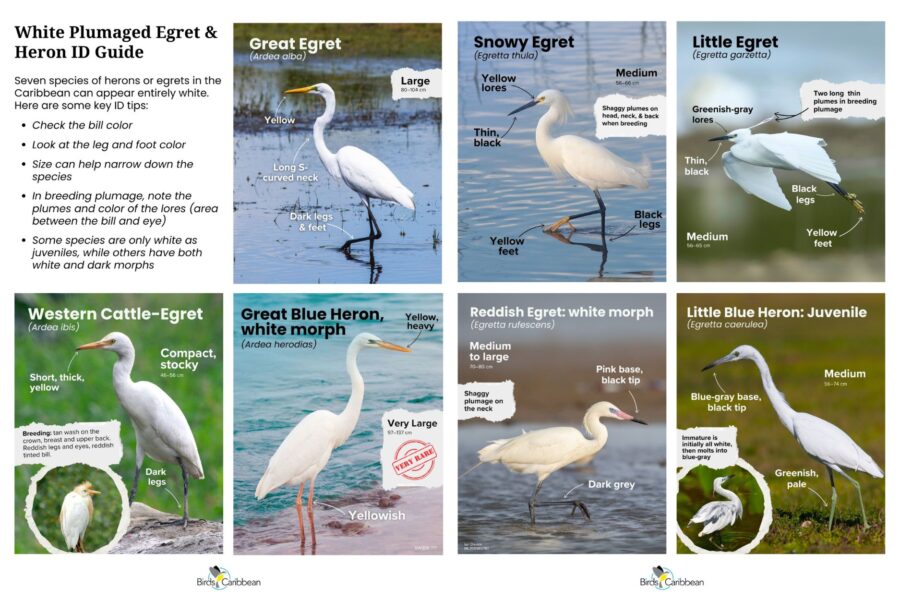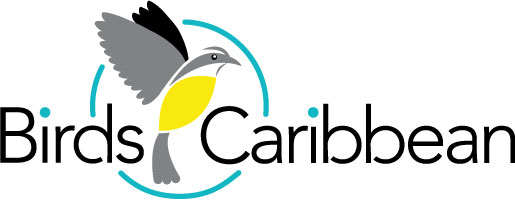
Seven spectacular species of egrets and herons in the Caribbean can have all-white plumage. You read that right—seven! With so many sleek, long-legged, long-necked, all-white waterbirds around, telling them apart can be tricky! But don’t worry—if you look closely, each species has distinctive features that set it apart. Our helpful tips and ID graphics will have you spotting those differences like a pro. Dive in to level up your egret and heron ID skills!
When identifying an all-white egret or heron, focus on a few key features:
- Size – Compare it to nearby birds; some species are much larger than others.
- Bill color – This varies among species, including yellow, black, and even bi-colored bills.
- Leg and foot color – These can be helpful, but may be hard to see if the bird is standing in water.
- Breeding plumage – Some species develop special plumes or color changes around the eyes (lores) in breeding season.
- Plumage variations – Some birds are only white as juveniles, while others have both white and dark morphs.
1. Great Egret
We’re starting off easy! The Great Egret stands out due to its large size, yellow bill, dark legs, and long, S-curved neck. It favors large freshwater and saltwater swamps, grassy marshes with stagnant water, river banks, and turtle grass beds in shallows behind reefs.
The Great Egret is a common year-round resident in The Bahamas, Greater Antilles, Antigua and Guadeloupe; and an uncommon one in the Virgin Islands. It is a common non-breeding resident in the Cayman Islands, St. Barthelemy, and Barbados. While generally uncommon elsewhere in the Lesser Antilles, local numbers are augmented from September to April by migrants from North America.
Breeding season tip: Great Egrets breeding in the Caribbean develop bright green lores (the area of a bird’s face between its eye and bill), more orangey bills, and extravagant plumes (as shown in the photo above right).
2. Great Blue Heron: White Morph
The only other large bird amongst our seven contenders, the White morph of Great Blue Heron, is very rare. This very tall and large bird is considered by some to be a separate species—Great White Heron (Ardea occidentalis). It can be distinguished from the Great Egret by its larger size, heavier bill, and dull yellowish legs. The common blue morph of the Great Blue Heron (photo below right) looks completely different with blue-gray upper parts, short black plumes on the head, and black-and-chestnut shoulder pattern.
3. Western Cattle Egret
Another all-white waterbird with a yellow-orange bill, Cattle Egrets are much smaller and stockier than our previous two yellow-billed birds. You can find this species feeding in pastures or other open habitats away from water. It is a common year-round resident throughout the West Indies. In breeding plumage, Cattle Egrets no longer makes our list of ‘all-white’ birds, as they take on a tan wash on the crown, breast and upper back. Their legs, eyes, and bill also become reddish!
4 & 5. Snowy Egret & Little Egret
These two species are nearly identical—both have black bills, black legs, and yellow feet, and both prefer freshwater swamps and saltwater lagoons. They’re even roughly around the same size! So—how do you tell these two lookalikes apart?
The first clue is in the lores: look for the yellow lores of the Snowy Egret, in contrast to the greenish-gray lores of the Little Egret. But beware, in breeding plumage the Little Egret’s lores take on a yellowish tint! This however is when clue number two becomes apparent—in breeding birds, the Little Egret sports two long, thin head plumes, whereas the Snowy Egret has shaggy plumes.
Location tip: Snowy Egrets are common in much of the West Indies, while Little Egrets are rare and mostly found in the Lesser Antilles and Puerto Rico.
6. Reddish Egret: White Morph
The medium-sized Reddish Egret comes in two color morphs: one that is all-white, and a more common dark morph that is dark gray with a reddish neck. Both morphs have dark legs, shaggy head and neck feathers, and a distinctive bi-colored bill that is pink at the base and black at the tip. The lores become bright blue during the breeding season.
Behavior tip: Reddish Egrets are known for their unique feeding style: they stalk, run, dance, and leap in the air after their prey, often with their wings spread to create shade and reduce glare.
Juvenile white-morph Reddish Egrets are all also white but they have an all-black bill—this all-black bill and their dark legs set them apart from juvenile Littler Blue Herons which are also all white, but have paler, yellow-green legs and a bi-color bill that is blue-gray at the base and dark at the tip.
You may also mix up a juvenile white-morph Reddish Egret with an adult Snowy Egret because they share an all-black bill—but remember, Snowy Egrets have yellow feet and lores. Reddish Egrets are also larger, and have a heavier bill.
To tell the dark morph Reddish Egret from an adult Little Blue Heron: bill color, as well as the size difference and the leg color are your go-to field marks! For both color morphs, the larger size and shaggy plumage on the neck will distinguish Reddish Egrets from Little Blue herons.
7. Little Blue Heron: Juvenile
Juvenile Little Blue Herons are entirely white, making them easy to mistake for other species. Look for the bi-colored bill color, which is dark at the tip with a pale blue-gray base. This rules out Snowy Egrets (all-black bill) and Reddish Egrets (pink-based bill). As they molt into adult plumage, they become a mix of white and gray before turning completely dark gray with a reddish neck. Adult Little Blue Herons can be distinguished from dark-morph Reddish Egrets by their smaller size, purplish neck and bi-color bill (blue-gray a the base with dark tip), compared to the shaggy rusty-colored neck of the Reddish Egret and bi-colored bill that is pink at the base dark tip .
Little Blue Herons favor calm, shallow waters and and can be found throughout the West Indies year-round.
You can view all the graphics, plus a ‘bonus’ quiz in this pdf booklet:
We’ve created two versions of an ID card that you can download, print, and laminate for easy reference in the field. You can print is as a one-sided 11×17 sheet or a two-sided 8.5×11 page.
Two Image (side by side) White Egret and Heron ID card for Printing
Two Image White Egret and Heron ID card for Two-sided Printing












